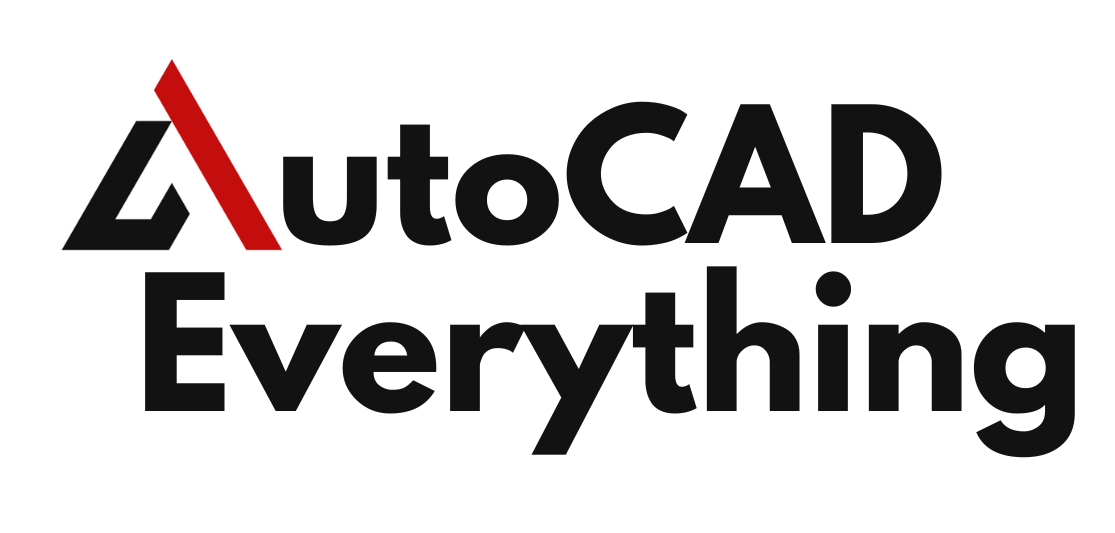Introduction
Losing a drawing or experiencing file corruption in AutoCAD can be a frustrating experience, especially when you’ve invested significant time and effort in creating detailed designs. Fortunately, AutoCAD provides a powerful tool called the Drawing Recovery Manager to help you recover unsaved or corrupted files. This tool is a lifesaver in cases of unexpected crashes, power outages, or system failures. This article provides a detailed, step-by-step guide to using AutoCAD’s Drawing Recovery Manager to recover your work and minimize the risk of data loss.
Table of Contents
Why You Might Lose AutoCAD Files
Before we dive into the recovery process, it’s important to understand why files might be lost or corrupted in AutoCAD. Common reasons include:
- Unexpected Crashes: AutoCAD or your computer may crash due to hardware malfunctions, software bugs, or resource overloads.
- Power Failures: If you lose power while working on a drawing without saving, AutoCAD might not have had the chance to save your changes.
- Corrupted Files: A file might become corrupted due to disk errors, file system issues, or improper shutdowns, rendering the file unreadable.
Fortunately, AutoCAD has built-in safety mechanisms to help you recover your work when these issues arise. The AutoSave feature, backup files, and the Drawing Recovery Manager are essential tools that ensure you don’t lose all your progress.
What is the AutoCAD Drawing Recovery Manager?
The Drawing Recovery Manager is a tool in AutoCAD that helps you recover unsaved, crashed, or corrupted drawing files. It automatically launches when AutoCAD is restarted after a crash and provides access to backup files and AutoSave files that were generated during your session.
The Drawing Recovery Manager allows you to:
- Recover unsaved drawings from AutoSave files.
- Retrieve previously saved drawings from backup (.bak) files.
- Repair corrupted files using AutoCAD’s recovery tools.
How AutoSave and Backup Files Work in AutoCAD
Before discussing recovery, it’s important to understand the two types of safety files that AutoCAD creates:
- AutoSave Files (.sv$): AutoCAD automatically saves your work at regular intervals (set by the user in preferences). These files have the extension
.sv$and can be found in the AutoSave folder. AutoSave files can be used to recover unsaved work after a crash. - Backup Files (.bak): Every time you manually save a drawing, AutoCAD creates a backup of the previous version of the file. These
.bakfiles can be renamed to.dwgto access earlier versions of your drawing in case the primary file is corrupted or missing.
Step-by-Step Guide to Recovering AutoCAD Files Using the Drawing Recovery Manager
Let’s break down the process of recovering unsaved or corrupted AutoCAD files using the Drawing Recovery Manager.
Step 1: Launch AutoCAD and Open the Drawing Recovery Manager
If AutoCAD crashes or closes unexpectedly, the Drawing Recovery Manager usually launches automatically the next time you open AutoCAD. However, you can manually open the Drawing Recovery Manager if needed.
- Automatically Launch: After a crash, when you reopen AutoCAD, the Drawing Recovery Manager will appear on the screen, displaying a list of recent drawings and recoverable files.
- Manually Launch: If the Drawing Recovery Manager doesn’t appear automatically, you can manually open it by typing
DRAWINGRECOVERYin the Command Line and pressing Enter.
Step 2: Locate the Unsaved or Corrupted File
Once the Drawing Recovery Manager window is open, it will display a list of recoverable drawings under two main categories:
- Drawing Files: These are your original drawing files (.dwg) that you were working on when AutoCAD crashed.
- AutoSave Files (.sv$): These are temporary files saved by AutoCAD at regular intervals. If the original drawing wasn’t saved recently, these files provide a way to recover most of your unsaved work.
Step 3: Open and Recover the Drawing
To recover a file, follow these steps:
- Find Your File: In the Drawing Recovery Manager, locate the drawing you were working on. It will be listed under Drawing Files if you saved it before the crash or under AutoSave Files if it wasn’t saved.
- Click to Open: Double-click on the drawing name in the Drawing Recovery Manager. If you’re recovering from an AutoSave file, AutoCAD will automatically open the most recent version of your work.
- Save the Recovered Drawing: Once the file opens, save it immediately. Go to File > Save As, and save the drawing as a new DWG file. It’s important to save the recovered file with a new name to avoid overwriting any existing files that may still be recoverable.
Step 4: Recover from Backup Files (.bak)
If your drawing file is corrupted and cannot be opened, you can try recovering from the backup file (.bak). AutoCAD automatically creates a .bak file each time you manually save a drawing. Here’s how to recover from a backup file:
- Locate the Backup File: Navigate to the folder where your drawing is saved. You should find a
.bakfile alongside your original.dwgfile. The.bakfile has the same name as the drawing but with a.bakextension. - Rename the Backup File: Change the file extension from
.bakto.dwg. For example, if the file is named drawing1.bak, rename it to drawing1_recovered.dwg. - Open the Renamed File: Once renamed, open the file in AutoCAD as you would with any DWG file. This backup file will contain the drawing data from the last time you saved the file manually.
Step 5: Recover Corrupted Files Using the Recovery Command
In some cases, a drawing file might become corrupted and fail to open normally. AutoCAD offers a built-in Recover command to repair corrupted files. Here’s how to use it:
- Run the Recover Command: Type
RECOVERin the Command Line and press Enter. - Select the Corrupted File: Browse for the corrupted drawing file (.dwg) you want to repair and select it. AutoCAD will attempt to repair the file.
- Review the Recovery Report: After the recovery process, AutoCAD will display a report summarizing the issues found and whether the file was successfully repaired.
- Save the Recovered File: If the recovery is successful, save the repaired file with a new name to ensure you don’t overwrite the corrupted version.
Step 6: Check for Temporary Files (.sv$)
If none of the above methods work, you can try to recover from the AutoSave files. These files typically have the .sv$ extension and are stored in the AutoSave folder.
- Find the AutoSave Folder: To locate the folder where AutoSave files are stored, go to Tools > Options in AutoCAD. Under the Files tab, expand the Automatic Save File Location section to find the directory path.
- Rename the AutoSave File: Locate the
.sv$file with the same name as your drawing. Rename the file’s extension from.sv$to.dwg. - Open the File in AutoCAD: Once renamed, open the file in AutoCAD as you would a regular DWG file. This will recover the drawing based on the last AutoSave point.
Preventing Data Loss in AutoCAD
While AutoCAD provides several recovery options, it’s always better to take preventive measures to minimize the risk of losing work. Here are some tips for safeguarding your AutoCAD drawings:
- Enable AutoSave: Ensure AutoSave is enabled and set a reasonable time interval (e.g., every 5 to 10 minutes) to minimize data loss in case of a crash. You can enable this feature by going to Tools > Options > Open and Save tab and adjusting the Automatic Save time.
- Save Regularly: Make it a habit to manually save your work frequently, especially after completing major tasks or revisions.
- Backup Files: Use cloud-based backup solutions or external hard drives to automatically back up your drawings, ensuring that you have a copy of your work even in the event of hardware failure.
- Audit and Purge Drawings: Regularly use the
AUDITandPURGEcommands to check for and fix errors in your drawings. This helps reduce the risk of file corruption and keeps your drawings clean and efficient.
Conclusion
AutoCAD’s Drawing Recovery Manager is an invaluable tool for rescuing unsaved or corrupted files after a crash or unexpected shutdown. By following the steps in this guide, you can recover most, if not all, of your lost work. Whether you’re working with AutoSave files, backup files, or corrupted drawings, AutoCAD provides multiple recovery options to ensure your projects remain intact. By taking preventive measures like enabling AutoSave and regularly saving your work, you can minimize data loss and avoid the frustration of redoing hours of design.
FAQs
- How do I open the Drawing Recovery Manager in AutoCAD?
The Drawing Recovery Manager opens automatically after a crash, but you can also manually open it by typingDRAWINGRECOVERYin the Command Line and pressing Enter. - Where are AutoCAD AutoSave files stored?
AutoSave files (.sv$) are stored in the directory specified under Tools > Options > Files > Automatic Save File Location. You can find and access them from there. - Can I recover a corrupted AutoCAD file?
Yes, AutoCAD’s RECOVER command can repair corrupted files. TypeRECOVERin the Command Line, select the corrupted file, and AutoCAD will attempt to fix it. - What is a .bak file in AutoCAD?
A.bakfile is a backup file that AutoCAD creates every time you manually save a drawing. You can recover an older version of your drawing by renaming the.bakfile to.dwgand opening it. - How can I prevent losing my AutoCAD drawings?
Enable AutoSave, save your work regularly, use cloud backups, and regularly audit your files to prevent data loss and reduce the risk of file corruption.

